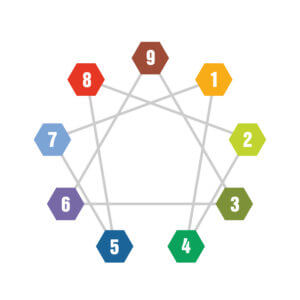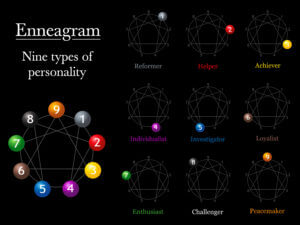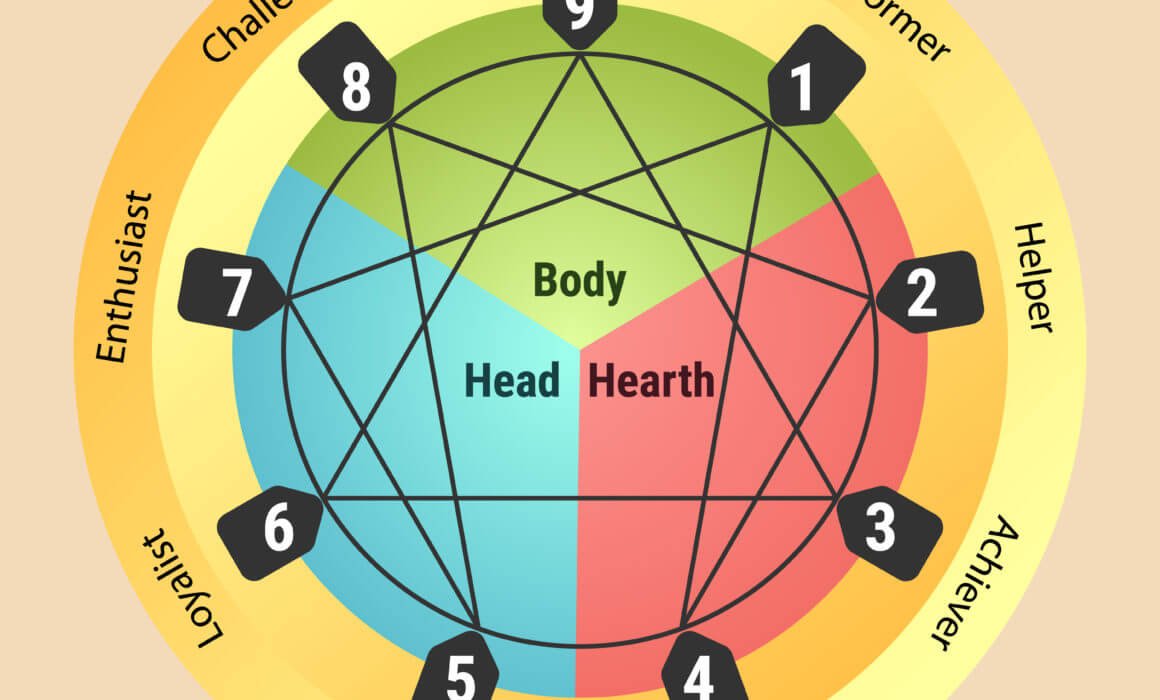What is an Enneagram?
“What is an Enneagram?” Read on to learn how Maria came to be a Certified Enneagram Practitioner and how it can help you have a better understanding of who you are so that you can become your best self.
The Enneagram as a Sacred Tool of Transformation

Maria Mandarino – Enneagram Practitioner
By Maria Mandarino, LAc, Dip Ac (NCCAOM), LMT, BFCP, CSD, MSEd
In a recent interview, Helen Palmer, internationally recognized teacher of the modern-day Enneagram, said, “the Enneagram is a spiritual method for psychological distress.”
When I heard her say these words, I immediately recalled a conversation one evening some years ago with a friend who is a spiritual director. My friend had told me that spiritual direction was the part of psychotherapy Freud had extracted from practice – the part that included discussion of the divine, of grace, mystery, and the movement of the Spirit. The part that addressed what the heart knew and the mind might never be able to grasp. And with that extracted part of psychotherapy, also went ancient wisdom traditions, such as the Enneagram.
In the months that followed that conversation, my friend repeatedly asked me to consider becoming a spiritual director. And despite having an interest in the Enneagram, I would repeatedly tell her, “You’ve got the wrong woman.” Nevertheless, she persisted for months. And each time she asked, I continued to say no. She would usually reply that I was made for this work or something to that effect. It got to be a little awkward because clearly, neither of us was going to budge.
Until that evening when my friend got my attention. It was because I knew her words to be true. Having been in therapy myself, I had often wanted to take on the deeper questions of spirituality, but the clinical hour never seemed to allow space for it and my counselor also did not seem to have much of an interest in those conversations. Later on, as an acupuncturist who practices a spiritually-based style of acupuncture, I heard similar words from my patients when I recommended they seek counseling for issues they were grappling with. They didn’t want to go to therapy because they said they never really got meaningful results. They said they got more from my work with them as an acupuncturist.
And so began my two-year journey at Benet Hill Monastery, nestled in the magnificent Black Forest of Colorado Springs, where I studied the ancient art of Spiritual Direction and where I also first learned about the Enneagram as a sacred healing tradition. It would be the start of a journey that would inspire me to become a Certified Enneagram Practitioner in The Narrative Tradition, an intensive course of training and internship developed by Helen Palmer.
What the Enneagram Is

Enneagram Circle
Ennea means nine in Greek. And gram means map. And so the Enneagram is a map of nine personality types. The tradition dates back to the Sufis. The diagram is based on patterns of sacred geometry, a circle with an interrelated set of lines inside it. Each type is said to be one of the nine faces of God. And while we hold aspects of all nine types, we only lead with one. And that type is ours forever. It does not change.
Your Enneagram type is the map of your soul’s inner terrain. It holds coding from your first moments on the planet – things you learned even preverbally – the expressions you made that caused your mother to smile or frown, and how that learning continued to evolve through your development all the way to early adulthood when it is thought your Enneagram number is firmly set.
Vulnerability and Trust
As an acupuncturist, tongue observation is one of the methods I use to diagnose my patients. The tongue is a map of the inner terrain of the body. It reveals our weaknesses, both genetic and those caused by lifestyle. Historically, in western culture, self-disclosure is accomplished in the handshake. By opening and offering the hand we reveal we hold no weapons. Thus, both tongue diagnosis and the handshake are expressions of vulnerability and trust. In my view, revealing your Enneagram type holds the same level of trust and vulnerability. When we reveal our Enneagram type, we are revealing our deepest and most vulnerable self. And I have worked with people who have broken into tears as they’ve come to self-awareness through the Enneagram.
What the Enneagram is Not
If you’re reading this blog, you have probably come upon the Enneagram on social media somewhere. It is a trendy topic and there is always reward and risk when an ancient system becomes popularized. Some people who are not trained in the Enneagram have latched onto it as something of a parlor game, similar to the common 1970s icebreaker, “Hey, what’s your sign?” As if that information would provide some magical insight into what made you tick. And then they would know you.
If you know anything about astrology, you are aware there’s a whole lot more to your chart than your Sun sign and so the “What’s your sign” question doesn’t lead to a real deep awareness of the individual. The same is true of the Enneagram. Within the circle of the Enneagram, there are sacred geometrical patterns – a system. There are three centers of awareness. There are the Vices and the Virtues of each type. There are the Habits of Mind and the Holy Ideas for each type. There are adjacent numbers to our types, called the Wings, which influence our type. There are defense mechanisms for each type. There are our Stress and Security Lines which govern how we respond in avoidance or attainment of goals. There is an orientation to time for each type. And there are 27 subtypes, which is an area of study unto itself.
Thus, the Enneagram offers far more than nine ways to label a person. This is why we say the Enneagram doesn’t put you into a box, but rather liberates you from the box. However, the Enneagram cannot assist us in our spiritual liberation without a deep understanding of, and respect for, this ancient wisdom system. Having a guide who is trained to listen and hold up the proverbial mirror of type is of vital importance in the experience.
Enneagram Trends in the Workplace and Higher Education
In recent years, there has been a trend toward using the Enneagram in the workplace. I offer this work and in a healthy corporate culture, it can be quite helpful. Everyone involved needs to be clear on the power of the Enneagram, however, so that the Enneagram does not turn into a tool of manipulation.
Especially in the workplace, it needs to be clear that an Enneagram is a tool for deep self-knowing. It is there for the employee to understand their responses to stress, among other things. What organically flows from this is a more harmonious workplace, as each individual (employee as well as employer) develops a greater self-awareness. As self-awareness deepens, relationships within the workplace are enhanced. Awareness allows for ease. And ease allows for improved team building and greater productivity.
More recently, we are seeing institutions of higher learning using the Enneagram with students. As an educator, I believe this is a brilliant application of the Enneagram, encouraging students to align their type structure with their career goals. But to serve them best, students should be afforded the opportunity to work with a trained Enneagram professional. Anything less runs the risk of the Enneagram being used as a linear model, which is not how any system of sacred geometry works. To make the information in the Enneagram linear is to water down an ancient tradition. And it is important to remember that ancient traditions only remain powerful when they are honored.

The Nine Personality Types of the Enneagram
Transform and Augment Your Life
The Enneagram is dynamic. It is fluid and holographic and as fascinating and mesmerizing as the Sufi dance. It holds the power to transform and augment your life. And there is no better time on the planet than now to encounter your True Self through this powerful wisdom tradition.
Maria Mandarino is a master’s level educator, Certified Spiritual Director, board-certified and licensed acupuncturist, and massage therapist who specializes in somatic bodywork. She is a Certified Enneagram Practitioner as well as a Certified Bach Flower Practitioner. Maria holds degrees from Hofstra University, the New York College of Health Professions, and Phoenix Institute of Herbal Medicine and Acupuncture. Born in New York City and raised on Long Island, she now resides in the Phoenix Valley of Arizona and is available for virtual work. You may learn more about her work and how to contact her at www.MariaMandarino.com


